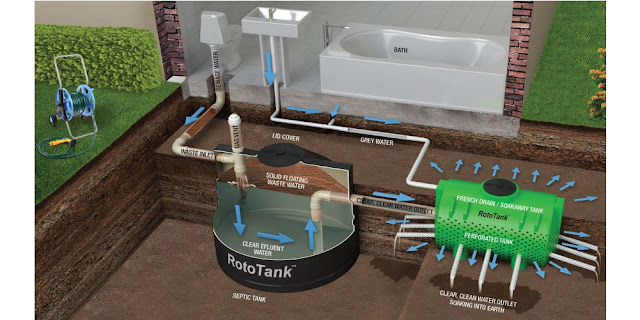Do septic tanks work even if you flush things like bleach down the toilet?
Understanding the Impact of Flushing Bleach Down Your Toilet on Septic Tank Functionality
Septic tanks are an integral part of many households, efficiently treating wastewater and maintaining a hygienic living environment. However, the proper functioning of these systems depends on what is flushed down the toilet. In this article, we will explore the impact of flushing bleach and similar substances down the toilet and its potential effects on septic tank functionality.
Understanding Septic Tanks
Septic tanks are underground wastewater treatment systems that rely on the natural process of bacterial decomposition to break down solid waste. These bacteria thrive in an environment that contains a balanced mixture of solids, liquids, and beneficial microorganisms. When harmful substances are introduced into the system, it can disrupt this delicate balance and compromise its overall efficiency.
The Role of Bleach
Bleach is a common household cleaning agent known for its disinfecting properties. It contains chlorine, which is effective in killing germs and removing stains. While bleach is suitable for cleaning hard surfaces, its impact on septic tanks requires careful consideration.
The Effects of Flushing Bleach
Killing Beneficial Bacteria: Bleach is a potent antimicrobial agent that kills bacteria, including the beneficial ones present in septic tanks. These bacteria play a crucial role in breaking down organic waste. When bleach is flushed down the toilet, it can harm the bacterial balance, hindering the decomposition process and potentially leading to system inefficiencies.
Slowed Decomposition: The introduction of bleach can impede the natural breakdown of solid waste in the septic tank. As a result, the accumulation of solid materials increases, potentially leading to clogs and backups in the plumbing system.
Environmental Impact: Septic tanks are designed to provide an environmentally friendly way of managing wastewater. However, when bleach and other harmful chemicals enter the system, they can negatively impact the surrounding soil, groundwater, and ecosystems, causing long-term environmental damage.
Best Practices for Maintaining a Healthy Septic System
Avoid Flushing Harsh Chemicals: To preserve the bacterial balance within your septic tank, it is crucial to avoid flushing harsh chemicals like bleach, antibacterial cleaners, and strong disinfectants down the toilet. Instead, opt for septic-safe alternatives or more natural cleaning solutions.
Regular Pumping: Schedule regular septic tank pump-outs to remove accumulated solids. Regular maintenance will help prevent system backups and maintain optimal functionality.
Use Environmentally Friendly Products: Choose cleaning products that are specifically labeled as septic-safe or environmentally friendly. These products are designed to minimize harm to the septic system and maintain a healthy bacterial balance.
Educate Household Members: Inform everyone in your household about the dos and don'ts of septic system maintenance. Encourage them to adopt practices that support the proper functioning of the septic tank, such as conserving water and avoiding flushing non-biodegradable items.
Conclusion
While septic tanks are designed to handle organic waste efficiently, flushing substances like bleach down the toilet can disrupt their functionality. Bleach kills beneficial bacteria, slows down the decomposition process, and can have long-term environmental consequences. To maintain a healthy septic system, it is crucial to avoid flushing harsh chemicals, practice regular maintenance, and use septic-safe and environmentally friendly products. By following these best practices, you can ensure that your septic tank operates efficiently, prolong its lifespan, and protect the surrounding environment.




Comments
Post a Comment